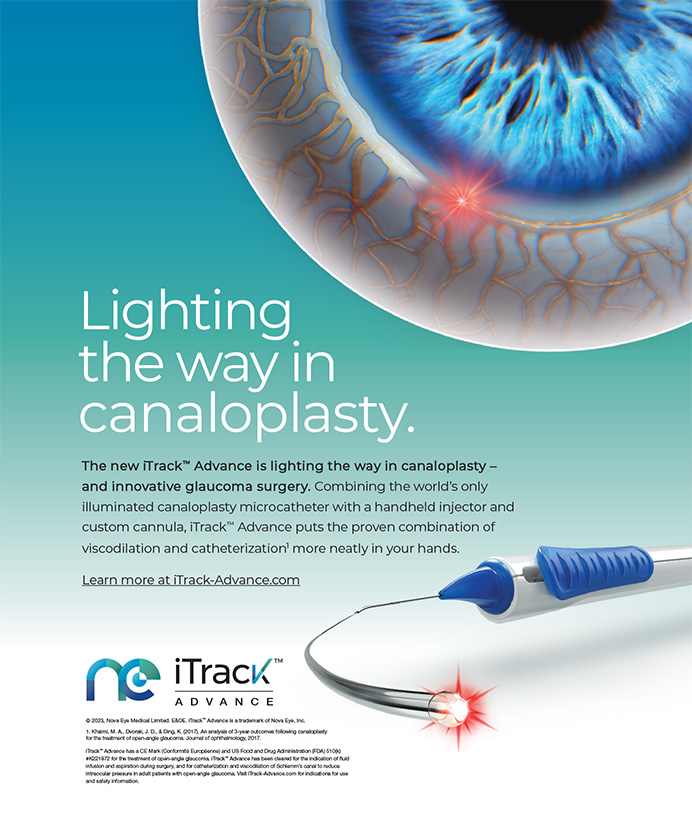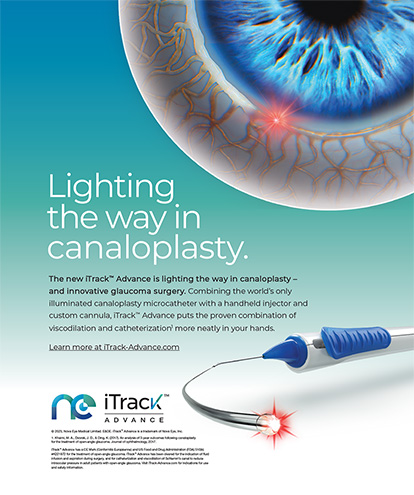The recent introduction of low-power phacoemulsification surgery opened the way to cold phaco as a safer and gentler way to remove cataracts. In this surgical procedure, the lenticular material is primarily removed by the fluidics, and the phaco power is employed to help the first fragmentation and the removal of harder nucleus fragments. In some instances, as with softer cataracts, the phaco power is not used at all, and only mechanical fragmentation and high vacuum aspiration take place. At the beginning of the phacoemulsification era, fluidics was added to diminish heat and to remove the fragmented material. Now, phacoemulsification is added when the fluidics alone cannot remove hard cataracts (Table 1).
SOLUTIONS, NEW PROBLEMS
This surgical modality offers some solutions, mainly because of the reduced ultrasound use, but also poses new problems of fluidics setting and control. The vacuum level required to remove the lens material with minimal use of ultrasound often exceeds 400 mm Hg, a level compatible with newer phaco machines but one that risks anterior chamber collapse with both pumps operating. With the Venturi pump (Millennium; Bausch & Lomb, Rochester, NY), a large amount of fluid is removed in a short time. With the peristaltic pump, the control of postocclusion surge becomes almost impossible. These difficulties are faced by continuously redesigning the fluidic part of the phaco machines, performing watertight corneal incisions and increasing the irrigation flux.
With some machines, an active air pump pressurizes the irrigation bottle to the desired level to allow the required irrigation in the anterior chamber. Thus, the increased fluid removal due to the high vacuum level (Venturi) or the abrupt postocclusion surge due to the high maximum vacuum selected (peristaltic) is efficaciously counteracted.
Increased bottle height, however, also increases anterior chamber pressure, especially with the watertight incisions that are suggested to avoid fluid leakage. We can easily observe a suddenly deepening anterior chamber occurring during surgery, frequently reduced when aspiration begins. This happens especially with weak zonules, and it is almost always the rule in highly myopic eyes. Increased pressure not only causes visibility loss due to defocusing, but may also promote fluid passing into the vitreous cavity through the zonules. Zonules are permeable to water, especially in older eyes, myopic eyes or in eyes that previously underwent vitreous surgery. The feasibility of pars plana vitrectomy using only anterior chamber irrigation in phakic and pseudophakic eyes has been demonstrated.1
DECREASE IN PRESSURE
The sudden decrease of anterior chamber pressure–occurring several times during phacoemulsification with high irrigation–further promotes vitreous hydration. Bimanual phacoemulsification with watertight incisions and lower irrigation ports is at special risk for this complication (Figure 1). This hydration can occur even when the pressure in the anterior chamber is not high but fast fluid streams take place. Large incisions with excessive leakage or the use of the first-generation Aqualase device (Alcon Laboratories, Inc., Fort Worth, Texas) are examples of such risk (Figure 2).
The iris represents a natural barrier against fluid's passage into the vitreous cavity. The iris is apposed to the peripheral lens, especially during earlier phacoemulsification procedures, and the stimulated dilator muscle keeps the iris adherent. Using epinephrine in the irrigating solution helps dilator muscle contraction, counteracting vitreous hydration. Localized iris lifting with a surgical instrument can help fluid passage through the zonules in selected cases, such as eyes that underwent posterior vitrectomy before cataract surgery.2 Vitreous hydration could be more evident in the floppy iris syndrome.3
THREE CONSEQUENCES
Vitreous hydration has three main consequences. The first is increased difficulty of cataract surgery, especially appearing during the last part of the phaco procedure. Because of posterior pressure due to increased vitreous volume, we find it difficult to enter the anterior chamber with the phaco tip. This problem is often faced by further increasing the bottle height and thus worsening the situation. In addition, small lens fragments pass into the vitreous cavity with irrigation fluid. The fragments can often be seen behind the posterior capsule, floating in the anterior vitreous. Patients frequently complain about increased vitreous floaters following cataract surgery; this may be due to invisible particles of lens material passing into the vitreous (Figure 3). In the worst cases, it can be difficult to implant the IOL, and even heavy viscoelastics may not be adequate to maintain enough space.
To minimize this problem, we should:
- Avoid extreme vacuum levels and–in general–extreme fluidic conditions;
- Avoid local anesthesia, as it can increase posterior vitreous pressure that must be counteracted with a stronger pressure in the anterior chamber;
- Fully dilate the iris with phenylephrine to help pupil block;
- Not pressurize the infusion bottle above the minimum required to maintain a deep enough anterior chamber. I usually start with 80 cm above a patient's head, immediately lowering if possible and especially lowering as phacoemulsification proceeds;
- Avoid watertight incisions to ensure a certain amount of fluid leakage that could reduce pressure spikes and sudden deepening/shallowing of the anterior chamber;
- Employ special care with highly myopic eyes (eyes known to be at risk for zonular distension); and
- Completely avoid high-speed fluid streams in the anterior chamber.
NEW AND EMERGING PROBLEM
Facing the era of refractive lens exchange, we need to recognize and avoid every cataract surgery complication. Vitreous hydration during surgery is a new and emerging problem, and it should be considered a potential complication of all surgeries. Even with a good surgical outcome, the postoperative presence of vitreous floaters is disappointing, both for the patient and for the surgeon.
Reprinted with permission from Cataract & Refractive Surgery Today Europe's March/April 2006 edition.
Roberto Bellucci, MD, is director of the Ophthalmic Unit Hospital and University of Verona in Italy. Dr. Bellucci discloses that he has no financial relationship with Alcon Laboratories or Bausch & Lomb. He may be reached at roberto.bellucci@azosp.vr.it or 39 045 807 2289 (fax).


